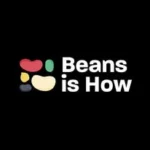

By Jerome Kusters
TSC.ai and the SDG2 Advocacy Hub Secretariat are collaborating to develop tools to better understand the Sustainable Development Goals and the food systems space in terms of the complex multitude of issues, key voices and engagement pathways. Atium SENSE Food Systems is now live! Here we present a case study that applies this technology to the newly launched game changers. Stay tuned for further updates on how this platform can be leveraged to drive impact at key moments like the UN Food Systems Summit, COP26 and Nutrition for Growth.
This year’s Food System Summit, called by the UN Secretary General, seeks to design and implement actions to make food systems operate in a more sustainable, just and equitable way.
The Summit is driven by five Action Tracks, each of which aims to identify and implement the so-called “game changers”, solutions that address the challenges inherent in our current food systems. The first step in this ambitious journey was the recent publication of the ‘first wave’ of game changing propositions – What’s next?
Now it is key to identify the most impactful propositions and kickstart coalitions to drive the implementation of these solutions. This won’t be an easy task, given the vast food systems landscape, and complexity of the multi-stakeholder networks involved. This article will illustrate how artificial intelligence (AI) and machine learning technologies can help bring clarity at this stage and create a blueprint for a resilient future for food systems.
Bringing clarity to food systems’ complex topical landscape
The food systems landscape is complex, and faces many challenges – from rising hunger and malnutrition, to environmental degradation, from unsustainable greenhouse gas emissions to inequality. Tackling such challenges with a true “systems” approach requires not only an organized view of what is happening (more on that here), but also identify the synergies, tradeoffs and gaps across this landscape to formulate and implement appropriate solutions effectively.
TSC’s Atium software uses models and methodologies to filter the global food systems chatter through a dynamic issue taxonomy, to provide clarity (e.g. which issues are perceived as most pressing, what are the trending debates?) and actionable insights (e.g. who should we engage or collaborate with on a given topic, at the national and global level?).
We mapped the topics of the fiveAction Tracks as a dynamic food systems taxonomy or “Issue Radar” (as shown below). For example, Action Track 5 Resilient Systems can be broken down into four topic areas (climate change, conflict, public health and trade) – each of which can be explored in greater detail. In light of the newly released Wave 1 game changers, the Issue Radar can identify (1) which solutions cater to multiple issues (taking into account a cost/benefit analysis), (2) which issues are not sufficiently addressed at this stage. In this way, the Issue Radar can help us to combine game changers of a similar theme into clusters and address gaps in the proposed solutions to ensure the final game changers are as comprehensive and efficient as possible.
Leveraging a large and interconnected network to build the most impactful coalition
Once aligned on the game changers, we need to mobilize and kickstart coalitions to deliver on their promise. In the spirit of the “People’s Summit”, we should not only engage the diverse stakeholders already involved in tabling the propositions, but also look for additional key stakeholders with the potential to contribute in an impactful way.
How do you build the most impactful multi-stakeholder coalition? First, you’ll need to identify network synergies (who’s involved where, and how they are connected). Second, expand your inner network by connecting with the ‘outside’ influencers and advocates who are working towards the same goals. Atium’s dynamic stakeholder mapping capabilities allow you to do exactly that.
As an example, we looked at the Action Track 1 ‘first wave’ Report, and the stakeholder network that is mentioned as driving this effort currently (a comprehensive picture can be downloaded here).
Here are a few immediate insights:
- The Action Track leadership is directly involved in the proposed solutions for Action Track 2’s Goal 2 (Food Access) and indirectly involved for those corresponding to Goal 1 (Zero Hunger) and 3 (Food Safety)
- There is a strong overlap in the stakeholders involved in Goal 1 and 2, whereas Goal 3 is more isolated
- The strongest academic involvement is in Goal 2, solutions 6 which focused on scaling up cold-chain technology









